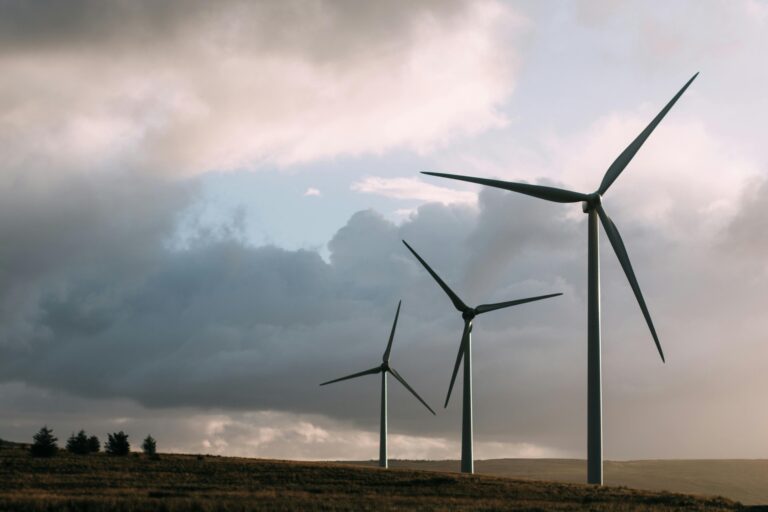With climate change on the rise, businesses and homes have to look for more sustainable options when it comes to keeping the lights on. Renewable energy is a newer energy source for people’s energy supply.
Let’s discuss the top 5 emerging technologies shaping the future of renewable energy.
Solar Power Technologies
Below are the solar power technologies that are the future of renewable energy.
Concentrated Solar Power (CSP)
This technology (CSP) focuses sunlight onto a small area using mirrors or lenses, typically a receiver, to generate heat. This heat is then produced through a steam turbine or heat engine. CSP systems can store thermal energy when the sun is not shining, allowing for continuous power generation.
Photovoltaic Solar Cells (PV)
On the other hand, Photovoltaic (PV) solar cells use semiconductor materials to create electricity by converting sunlight directly. When sunlight hits the PV cells, it creates an electric current through the photovoltaic effect. PV solar cells are commonly used in solar panels to generate electricity for residential, commercial, and utility-scale applications.
Perovskite Solar Cells
These are a solar cell type that uses perovskite-structured materials as the light-harvesting layer. They have recently become popular due to their high-efficiency potential, low manufacturing costs, and flexibility in design. Researchers are actively working to improve the stability and scalability of perovskite solar cells to make a working alternative to traditional solar cells.
Wind Power Technologies
Here are the different types of wind power technologies that are the future of renewable energy.
Offshore Wind Turbines
Offshore wind turbines are wind turbines that are installed in bodies of water, typically in oceans or seas. Wind is harnessed to generate electricity using the turbines, which is similar to onshore wind turbines.
Offshore wind turbines are often larger and have the potential to create more electricity as there is more consistent and stronger winds speeds at sea. They play a crucial role in renewable energy production and help reduce carbon emissions by providing clean and sustainable energy sources.
Floating Wind Farms
Floating wind farms are offshore wind farms with wind turbines mounted on floating structures instead of being fixed to the seabed. This technology allows wind farms to be deployed in deeper waters where traditional fixed-bottom offshore wind does not work as efficiently.
These wind farms can expand significantly. The capacity for offshore wind energy generation open up new areas for renewable energy development. They offer flexibility in deployment and can help countries harness their offshore wind resources more effectively.
Vertical Axis Wind Turbines
Vertical axis wind turbines (VAWTs) are wind turbine types that have the main rotor shaft vertically arranged; unlike traditional horizontal axis wind turbines (HAWTs), VAWTs have their blades rotating around a vertical axis.
VAWTs have several advantages, including capturing wind from any direction, lower noise levels, and easier maintenance due to their more straightforward design.
However, due to efficiency and scalability challenges, VAWTs are less common than HAWTs in large-scale wind energy projects. Nonetheless, VAWTs are still used in specific applications where their unique design features are advantageous.

Energy Storage Technologies
These technologies are essential in transitioning to a more sustainable and resilient energy system. They capture and store energy generated from renewable sources such as wind and solar power when the demand or supply is high.
These are the energy storage technologies that are available. These include:
- Pumped Hydro Storage: This technology involves pumping water from a lower to a higher reservoir when there is low demand and releasing it through the turbines during peak demand to generate electricity.
- Batteries: These are the most commonly used energy storage technologies. Lithium-ion batteries have become more popular for their specific features, which include a long cycle life, faster response times and high energy density.
- Compressed Air Energy Storage (CAES): These systems store energy by compressing air into underground caverns and pressurised vessels. Compressed air is released when electricity is needed, and this expands through turbines to generate electricity.
- Flywheel Energy Storage: These energy storage systems store energy in kinetic energy by spinning a rotor at high speeds. The rotor’s kinetic energy is converted back into electricity when needed.
Smart Grid and Grid Integration
These are advanced electrical distribution networks that monitor and manage the flow of electricity using digital technology. Sensors, communication systems, and meters are used to gather real-time data for electricity usage generation and distribution.
Grid integration refers to incorporating renewable energy sources, other distributed energy resources and energy storage systems into the existing electricity grid. The current grid infrastructure can use decentralised and variable energy sources such as wind turbines and solar panels to ensure stability, efficiency, and reliability.
Geothermal Energy
This energy source harnesses heat from the Earth’s core to help generate electricity and heat buildings. It uses steam or hot water from underground reservoirs to drive turbines and generate electricity. This source is also considered one of the most environmentally friendly and sustainable compared to fossil fuels, as it produces lower greenhouse carbon emissions.
Conclusion
These are the top 5 emerging technologies shaping the future of renewable energy. You can find any option for your business or home that meets your energy usage and energy-saving needs. You can use utility bidder to find great deals on renewable energy sources for your home and your businesses.
Sources
Also, Read The Following: digital marketing agencies in Houston


